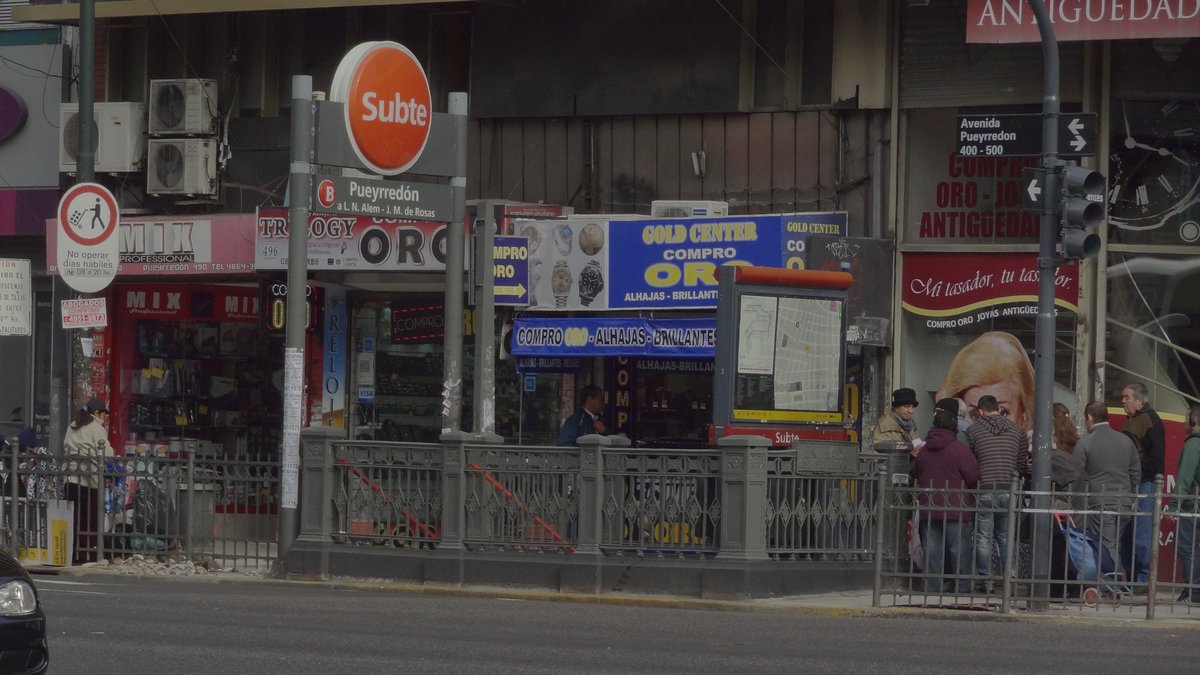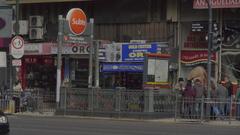
Pueyrredón Buenos Aires: Visiting Hours, Tickets, and Historical Significance Guide
Date: 15/06/2025
Introduction
Villa Pueyrredón, nestled in Buenos Aires, Argentina, is a neighborhood where history, culture, and authentic local life intersect. Far from the city’s most touristy districts, it offers visitors a genuine porteño experience, rooted in centuries-old traditions and shaped by the arrival of the Central Argentine Railway. Landmarks such as the Estación Villa Pueyrredón and the Monument to General Juan Martín de Pueyrredón celebrate the area’s pivotal role in Argentina’s independence and urban development. This comprehensive guide details historical context, attractions, practical visitor information, and insider tips to ensure you make the most of your visit to this remarkable Buenos Aires barrio.
(Buenos Aires Historia, Wikipedia)
Table of Contents
- Introduction
- Historical Background
- Getting There and Accessibility
- Visiting Hours and Tickets
- Main Attractions and Landmarks
- Cultural and Community Life
- Local Experiences: Food, Art, and Markets
- Recreational Activities
- Family-Friendly Activities
- Seasonal Events and Festivals
- Practical Tips for Visitors
- The Monument to General Juan Martín de Pueyrredón
- FAQ
- Conclusion
- References and Official Links
Historical Background
Villa Pueyrredón’s story traces back to the early 17th century, beginning with land grants by Governor Hernandarias on August 19, 1615. Initially part of San Isidro and later San Martín, it was incorporated into Buenos Aires in 1888. The area flourished in the early 20th century, catalyzed by the opening of the “Kilómetro 14” railway station—renamed Estación Pueyrredón in 1907 after Brigadier General Juan Martín de Pueyrredón, a key figure in Argentina’s independence movement. This connection spurred rapid urbanization and a vibrant immigrant community (Buenos Aires Historia, Wikipedia).
Getting There and Accessibility
- By Train: Take the Mitre Railway line from Retiro Station to Estación Villa Pueyrredón, placing you at the heart of the neighborhood.
- By Bus: Bus lines 53 and 107, among others, connect the area to different parts of Buenos Aires.
- By Subway: To visit the Monument to General Juan Martín de Pueyrredón, use the Pueyrredón station on subway Lines B or D.
- By Taxi or Ride-Share: Easily available and recommended, especially at night.
Villa Pueyrredón is a predominantly residential neighborhood with flat terrain and accessible public spaces. Parks such as Plaza Leandro N. Alem and Parque General Paz are wheelchair-friendly, with paved paths and accessible amenities (suedamerika-individuell.de).
Visiting Hours and Tickets
- Parks and Plazas: Open daily from dawn to dusk.
- Estación Villa Pueyrredón: Operates with train schedules from early morning until late evening. Tickets are available at the station or online.
- Monument to General Juan Martín de Pueyrredón: Open 24/7, free of charge.
- Museums and Clubs: Hours may vary; check official websites or contact directly.
- Guided Tours: Local agencies and community groups occasionally offer walking tours; booking in advance is recommended for a deeper cultural experience.
Most outdoor attractions and community spaces in Villa Pueyrredón are free. Some museums or special guided tours might have modest fees (Buenos Aires tourism site).
Main Attractions and Landmarks
Plaza Leandro N. Alem
The central plaza of Villa Pueyrredón, established in 1921, is lined with mature trees and offers playgrounds, benches, and artisan markets on weekends. It serves as a hub for community events and daily relaxation.
Visiting hours: Daily, dawn to dusk.
Parque General Paz
This large park features walking and cycling paths, sports facilities, and shaded picnic areas. Its proximity to Avenida General Paz makes it accessible for visitors from across the city. The park is wheelchair accessible (suedamerika-individuell.de).
Estación Villa Pueyrredón
A historic railway station, inaugurated in 1907, that embodies the neighborhood’s origins and continues to connect residents to central Buenos Aires. Its preserved architecture and original signage add to its charm.
Visiting hours: Open daily; train schedules vary.
Monument to General Juan Martín de Pueyrredón
Located along Avenida Pueyrredón, this monument honors a national hero of Argentine independence. Accessible 24/7, it’s a popular site for both reflection and photography.
Cultural and Community Life
Villa Pueyrredón boasts a vibrant cultural scene supported by social clubs like Club Social Pueyrredón, Club Gloria, and Club Cultural y Deportivo 17 de Agosto. These institutions organize sports matches, cultural exhibitions, and social events open to both locals and visitors. The Junta de Historia y Cultura de Villa Pueyrredón preserves and promotes neighborhood history through exhibitions and educational initiatives (Buenos Aires Historia, Wikipedia).
Local Experiences: Food, Art, and Markets
Café Culture and Bars
The neighborhood’s “cafés notables” are beloved gathering spots featuring vintage décor and classic Argentine pastries. Sample a cortado or medialunas while immersing yourself in the local rhythm (worldlyadventurer.com).
Street Art and Murals
Villa Pueyrredón’s streets are adorned with colorful murals that celebrate local history and Argentine identity. Guided walking tours are available through community centers.
Artisan Markets
Weekend markets offer fresh produce, cheeses, baked goods, and crafts, underscoring the area’s focus on sustainability and community interaction.
Recreational Activities
- Sports Clubs: Football, tennis, basketball, and fitness classes are offered by local clubs like Club Cultural y Deportivo Villa Pueyrredón.
- Cycling and Walking Routes: Tree-lined streets and bike lanes make for pleasant exploration.
- Yoga and Wellness: Outdoor yoga and wellness workshops are frequently held in parks.
Family-Friendly Activities
- Playgrounds: Modern facilities in parks and plazas.
- Children’s Performances: Seasonal puppet shows and storytelling sessions, especially during school holidays.
- Workshops: Cultural centers offer arts, crafts, and music workshops for all ages.
Seasonal Events and Festivals
- Barrio Anniversary: Celebrated on August 20 with parades, music, and cultural activities.
- Spring Festival: Fiesta de la Primavera with live music and dance.
- National Holidays: Independence Day (July 9) and Revolution Day (May 25) are marked by community gatherings.
Practical Tips for Visitors
- Safety: The area is friendly and safe by day; standard urban precautions apply.
- Language: Spanish is dominant; knowing basic phrases is helpful (Vamos Spanish).
- Currency: Most businesses accept cards, but cash (Argentine pesos) is recommended for markets (travelvagabonds.com).
- Best Visiting Times: Spring (October–November) and autumn (March–April) offer mild weather and abundant blooms (secretsofbuenosaires.com).
- Local Etiquette: Greet with “buen día” or “buenas tardes”; casual attire is standard.
The Monument to General Juan Martín de Pueyrredón: Visitor Guide
Overview
This monument stands as a tribute to one of Argentina’s foundational figures. Crafted in bronze and stone, it’s located at a key intersection of Avenida Pueyrredón, connecting neighborhoods like Recoleta, Palermo, and Balvanera. The site is a popular meeting point and photo spot.
Visiting Information
- Hours: Open 24/7.
- Entry Fee: Free.
- Guided Tours: Available through local operators; check in advance for schedules and prices.
- Getting There:
- Subway: Pueyrredón station (Lines B and D).
- Bus: Multiple lines stop nearby (SUBE card required).
- Taxi/Ride-share: Recommended at night.
Local Highlights
- Recoleta: Elegant architecture, museums, and the famous cemetery.
- Palermo: Trendy cafés, vibrant nightlife, and green spaces.
- Balvanera: A mix of tradition and local markets.
Amenities
- SIM cards: Sold in nearby shops.
- Wi-Fi: Available in many cafés.
- Restrooms: Accessible in surrounding establishments.
Safety & Tips
- Be mindful of belongings, especially in crowded areas.
- Prefer taxis or ride-sharing at night.
- Carry some cash for small purchases.
Accessibility
The monument and surrounding areas are generally accessible, but some older buildings may lack ramps or elevators.
Frequently Asked Questions (FAQ)
Q: Are there entrance fees or tickets for Villa Pueyrredón’s attractions?
A: Most outdoor spaces and monuments are free. Some museums or guided tours may charge admission.
Q: What are the main transportation options?
A: Mitre railway, bus lines 53 and 107, subway Lines B and D for the monument.
Q: Are guided tours available?
A: Yes, through local agencies and cultural centers.
Q: Is the area safe for tourists?
A: Yes, but exercise standard precautions.
Q: Best times to visit?
A: Spring and autumn for mild weather and festivals.
Conclusion
Villa Pueyrredón exemplifies the authentic spirit of Buenos Aires, offering visitors a blend of historical landmarks, lush parks, cultural experiences, and welcoming community life. With easy accessibility, free public attractions, and a calendar filled with local events, it’s a destination ideal for families, solo travelers, and culture enthusiasts alike. Enhance your exploration by downloading the Audiala app for real-time updates, maps, and guided tours. Discover Villa Pueyrredón—a true gem where Buenos Aires’ past and present converge.
References and Official Links for Further Information
- Villa Pueyrredón Historical Guide: Visiting Hours, Tickets, and Attractions in Buenos Aires, 2025, Buenos Aires Tourism
- Cultural and Local Significance of Villa Pueyrredón, 2025, Buenos Aires Historia
- Villa Pueyrredón: A Complete Visitor’s Guide to Buenos Aires’ Historic Neighborhood, 2025, Suedamerika Individuell
- Exploring the Monument to General Juan Martín de Pueyrredón: Visiting Hours, Tickets, and Essential Visitor Tips in Buenos Aires, 2025, Buenos Aires Tourism
- worldlyadventurer.com
- Vamos Spanish
- travelvagabonds.com
- secretsofbuenosaires.com






























































































































































